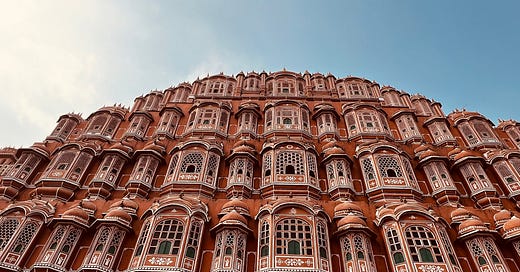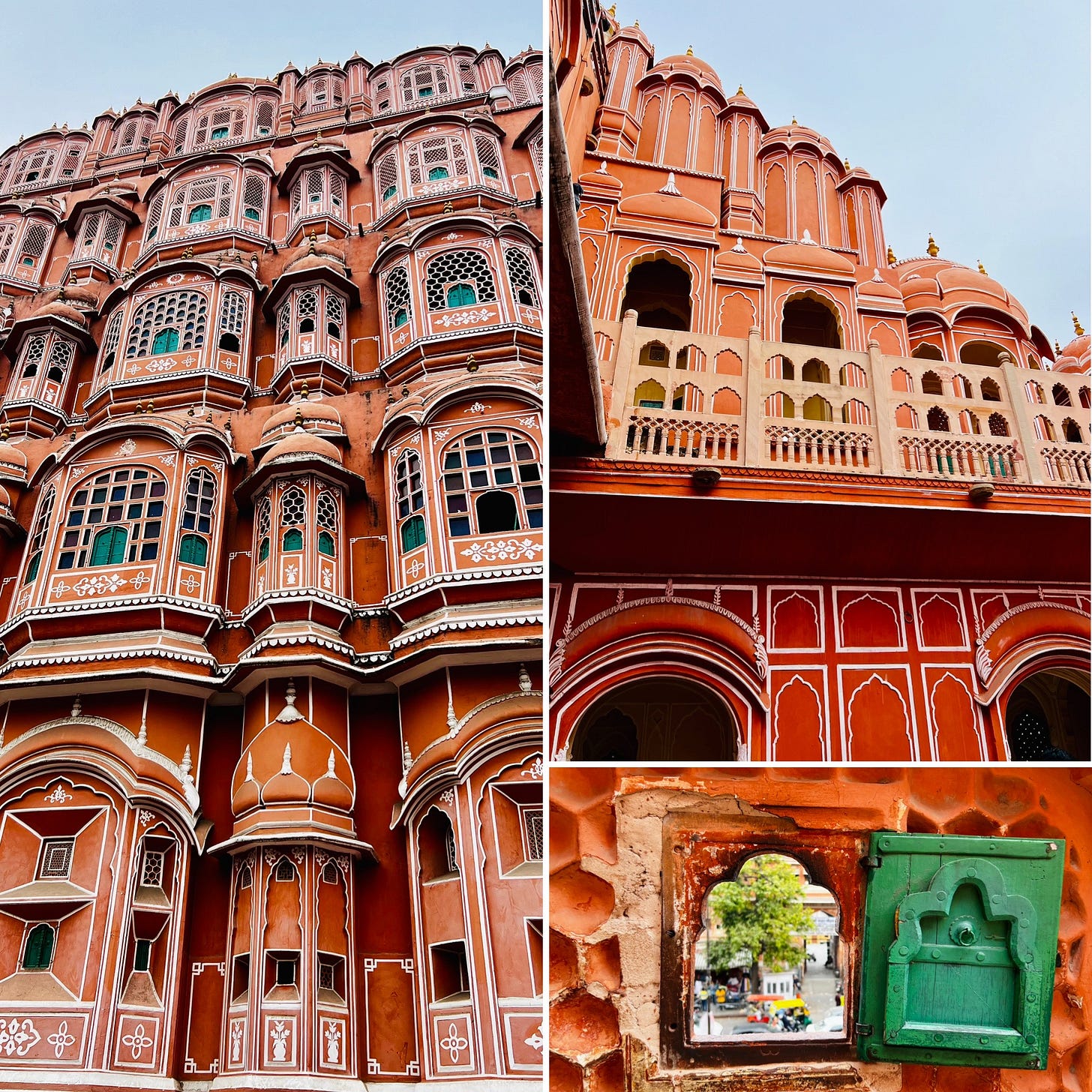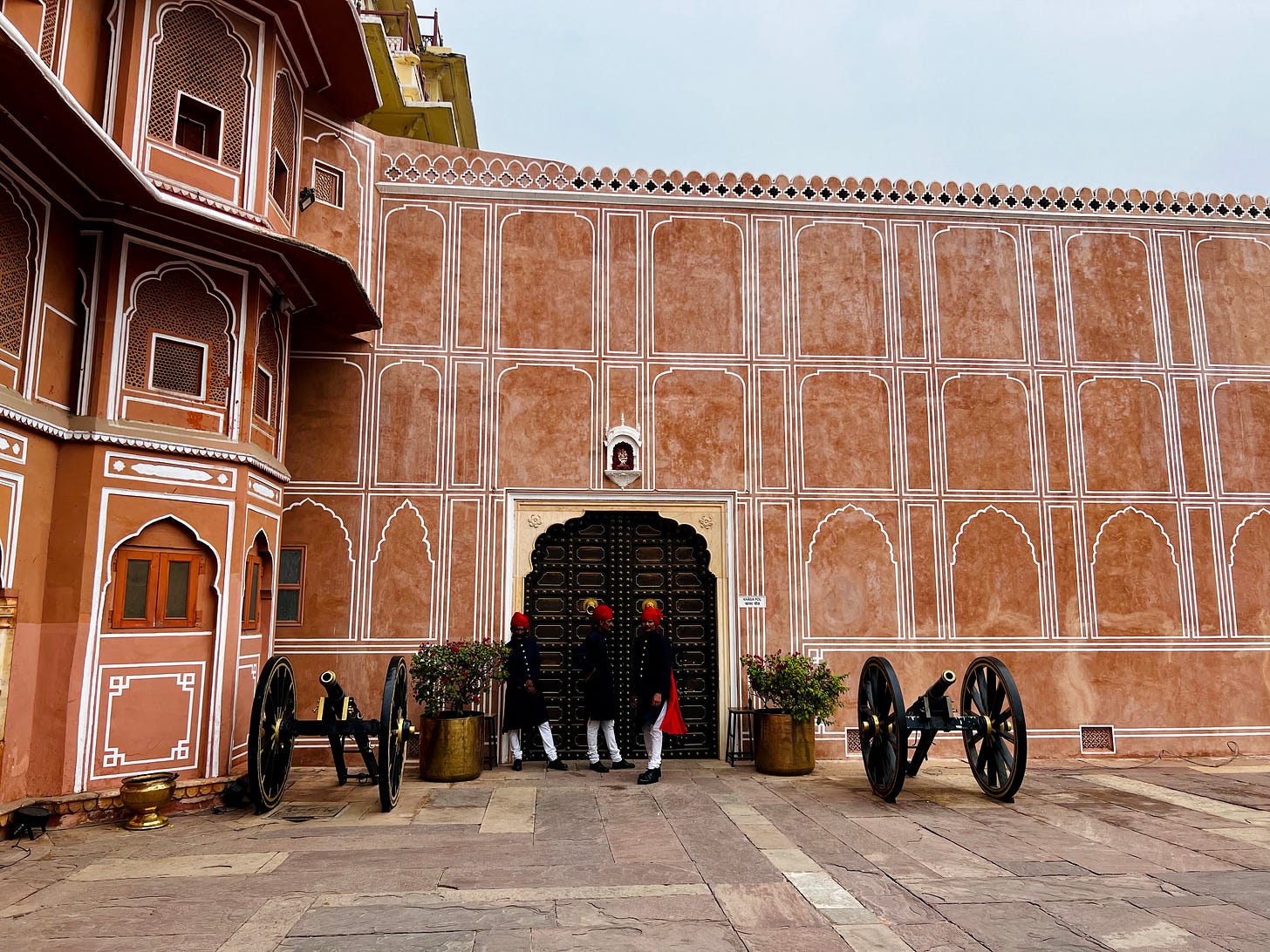Today’s piece is a continuation of my India travel diaries, following last week’s edition on rekindling childhood friendships. If this was forwarded to you, be sure to subscribe so you can join me on this journey.
Jaipur, the capital of the Indian state of Rajasthan, is a photographer’s paradise. It is for this reason that I’ve decided to primarily tell its story — and that of my 72 hours in the Pink City — through the lens of photojournalism, offering a visual narrative interspersed with some observations and history.
Given the lengthier nature of this article and the 15-odd pictures that follow, I’ve opted to skip the ‘handpicked reads’ section this time to fully embrace the city’s charm.
But before we embark on this vibrant journey through Jaipur, I have a special request:
Become an Infinity Inklings Ambassador!
Your support for the newsletter means everything, and now you can help it grow by inviting your friends to join our community. As a thank you, there are some exclusive perks for those who refer new readers:
Share Infinity Inklings: Use the referral link below or the “Share” button on any post. Whether it’s a text, email, or social media share, you’ll earn credit for any new subscribers.
Earn Exclusive Rewards: Your referrals can unlock special benefits:
Receive a heartfelt, handwritten Jaipur postcard for 3 referrals.
Gain access to an exclusive private slack channel for 10 referrals.
Opportunity to suggest a topic for an upcoming newsletter issue, giving you a direct hand in shaping the content, for 25 referrals.
Capturing Jaipur: A Visual Odyssey
Founded in 1727 by Maharaja ‘Sawai’ Jai Singh, Jaipur was designed to rival the grandeur of Mughal capitals of Delhi and Agra with their sandstone citadels. Raja Jai Singh, who became ruler at the age of 11, was distinguished early on with the title ‘Sawai’ by the Mughal Emperor Aurangzeb, a title implying he was ‘one and a quarter times superior’ to his peers.
Initially a vassal under the Mughal empire, he eventually emancipated his rule from Mughal dominance and took a bold step by relocating his capital from the traditional hill fort of Amber (pronounced Amer) to the newly-established city of Jaipur.
This city marked a departure from conventional hilltop fortresses, and was built on a plain so as to become a commercial nexus. This well-planned city — one of the first in modern India — followed ancient architectural and artisanal principles of both Vastu shastra and Shilpa shastra, became a commercial and royal hub, with streets designed for parades and a thriving craft bazaar which still welcomes locals and tourists alike. To this day, the royal palaces, gardens, and pavilions occupy a significant part of the city, contributing to its unique character, with the iconic pink hue adding to its charm. This color theme, initiated by Maharaja Ram Singh in 1876 for the Prince of Wales’ visit, has been meticulously preserved over the years.
Jaipur’s royal architecture is without doubt a bridge between the past and present, transporting us to a time when the great maharajas of India ruled the land. Amidst these historical marvels, the unmissable Hawa Mahal or ‘Palace of Winds’ stands out. Built in 1799 by Maharaja Sawai Pratap Singh, this palace is an architectural gem, with its honeycomb-like façade and ingenious design. The palace’s exterior features 953 small windows, known as Jharokhas, each intricately decorated with detailed latticework. This lattice served a dual purpose: It allowed the royal women to discreetly observe the daily life and festivities on the streets below, without being seen themselves, while also facilitating the flow of cool air during the summer months, using what’s now called the Venturi effect.
Talking about the rulers of yesteryears, no discussion of Jaipur can ignore the royal family of Jaipur. Post independence, India went through sweeping changes in its political landscape: For example, the royal families in India lost their kingdoms and powers and were left with not much more than inherited memories of past grandeur. As Pratinav Anil notes in Literary Review:
In 1947, the princes were pensioned off and allowed to keep their titles, making a mockery of India’s republican pretensions. The coup de grâce was delivered in 1971 by [Prime Minister] Indira Gandhi, who brought all their privileges to an end. An index of how quickly they came down in the world is to be found in the fortunes of Hyderabad’s first family. The seventh nizam was possibly the richest man in the world; the ninth was a cameraman on the set of Basic Instinct.
In Jaipur, however, the royal family has managed to maintain its cultural and symbolic significance, which continue to resonate with the public and contributes significantly to the city’s allure.
The City Palace, which is still a private residence, is a living example of this enduring legacy. Unlike many other monuments which are under the Archaeological Survey of India— including the Hawa Mahal pictured above, — this palace is retained by the royal family. The entrance fees, noticeably higher than government-controlled sites, directly support the royal estate, showcasing their continued relevance in modern times.
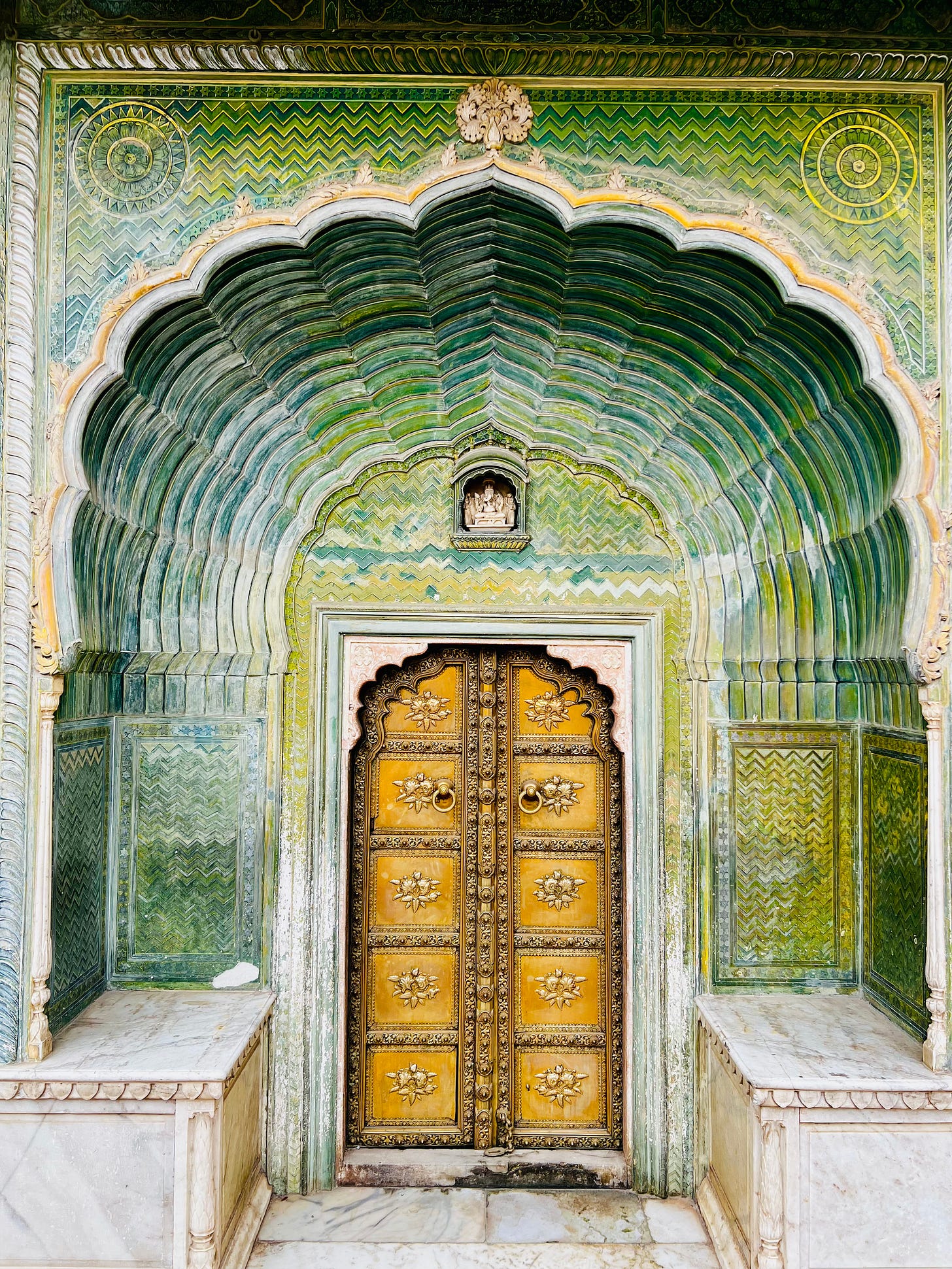
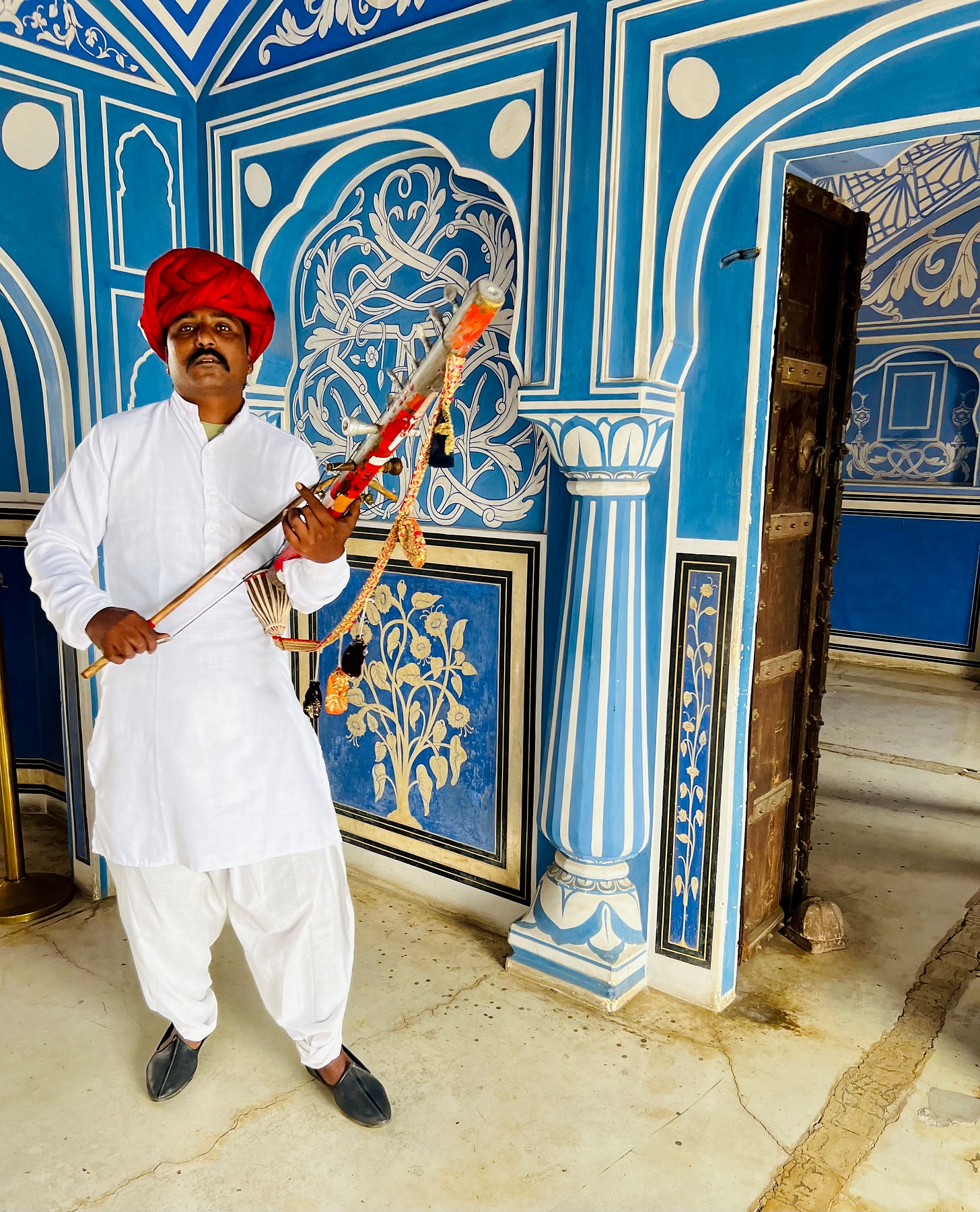
Moreover, many of Jaipur’s historic palaces and havelis have been repurposed into luxurious hotels, blending royal heritage with modern hospitality. The Rambagh Palace, a former royal residence now leased to the Taj group is a prime example. Not only is its elegance and service spectacular — earning it global acclaim as one of the world’s best hotels — but the palace grounds are also a sanctuary for peacocks. I was grateful to receive a private tour of the hotel, including the famous Suvarna Mahal restaurant which has hosted the likes of Queen Elizabeth II, Lord Mountbatten, and the Kennedys.
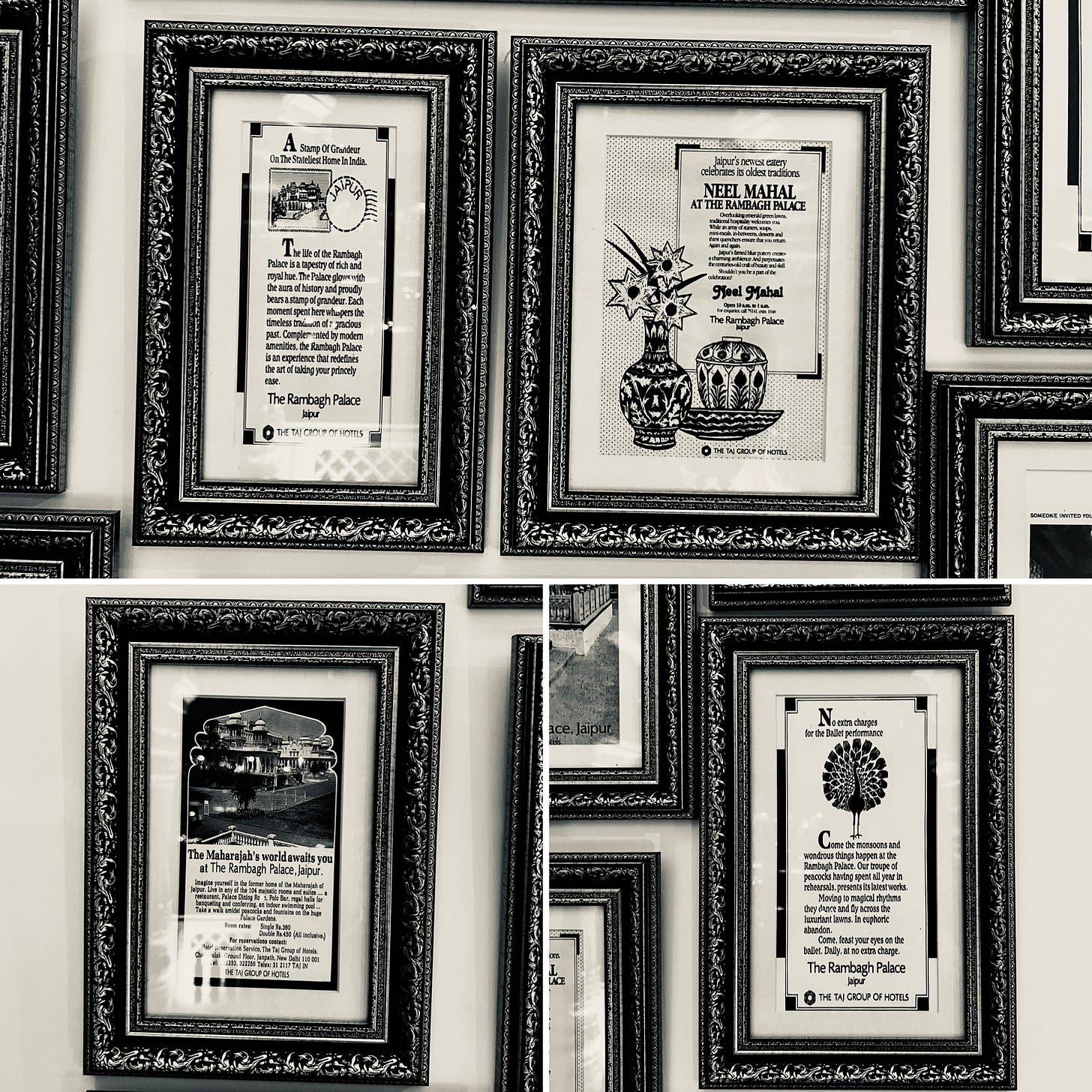

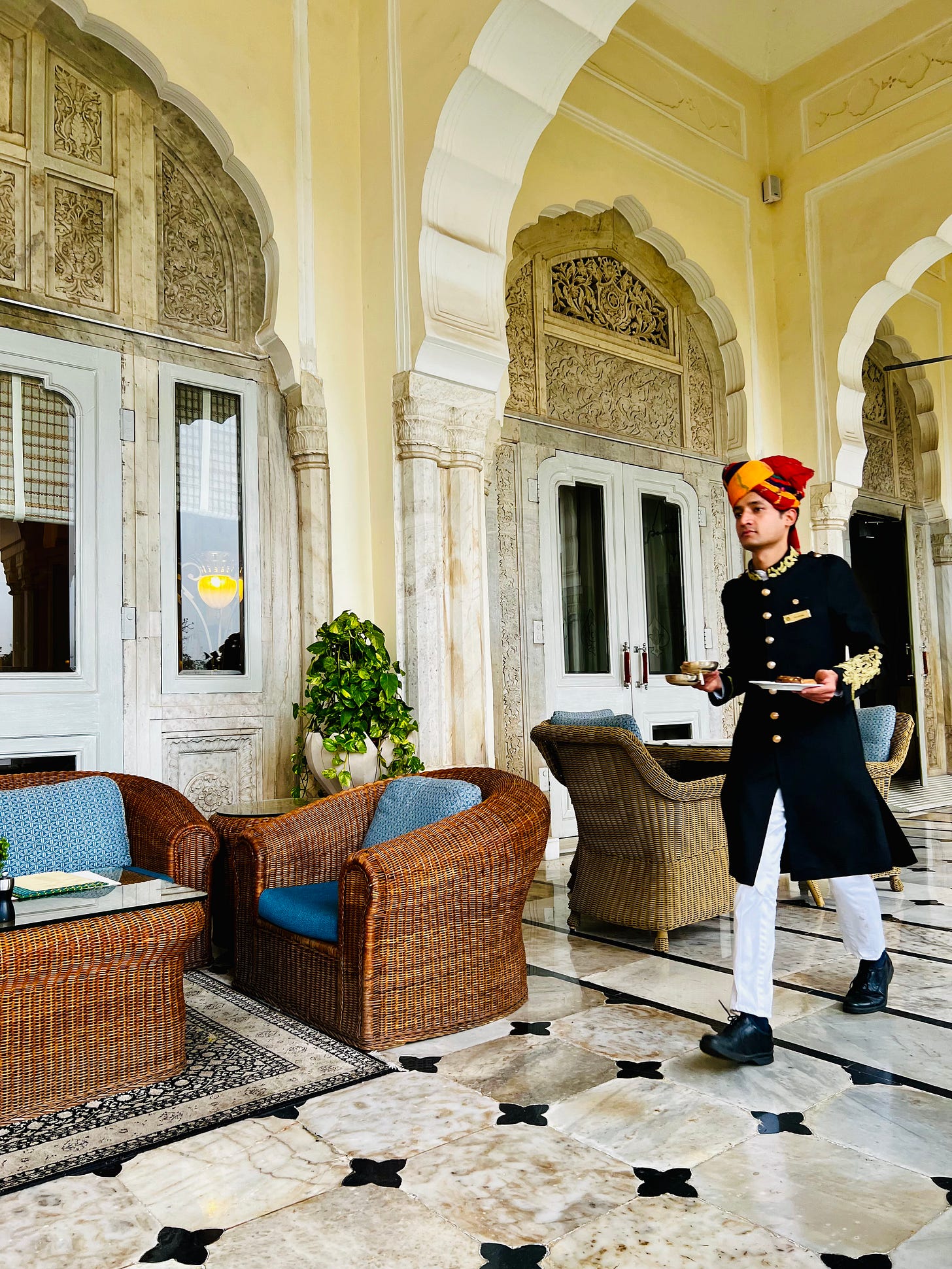
And finally, as with traveling in any city — it’s worth slipping into the side streets too: I had some lively discussions with the artisans, hawkers, and shopkeepers who keep this fantastic city ticking. Stay tuned for next week’s piece, where I’ll spotlight a memorable encounter with one of these local hawkers.

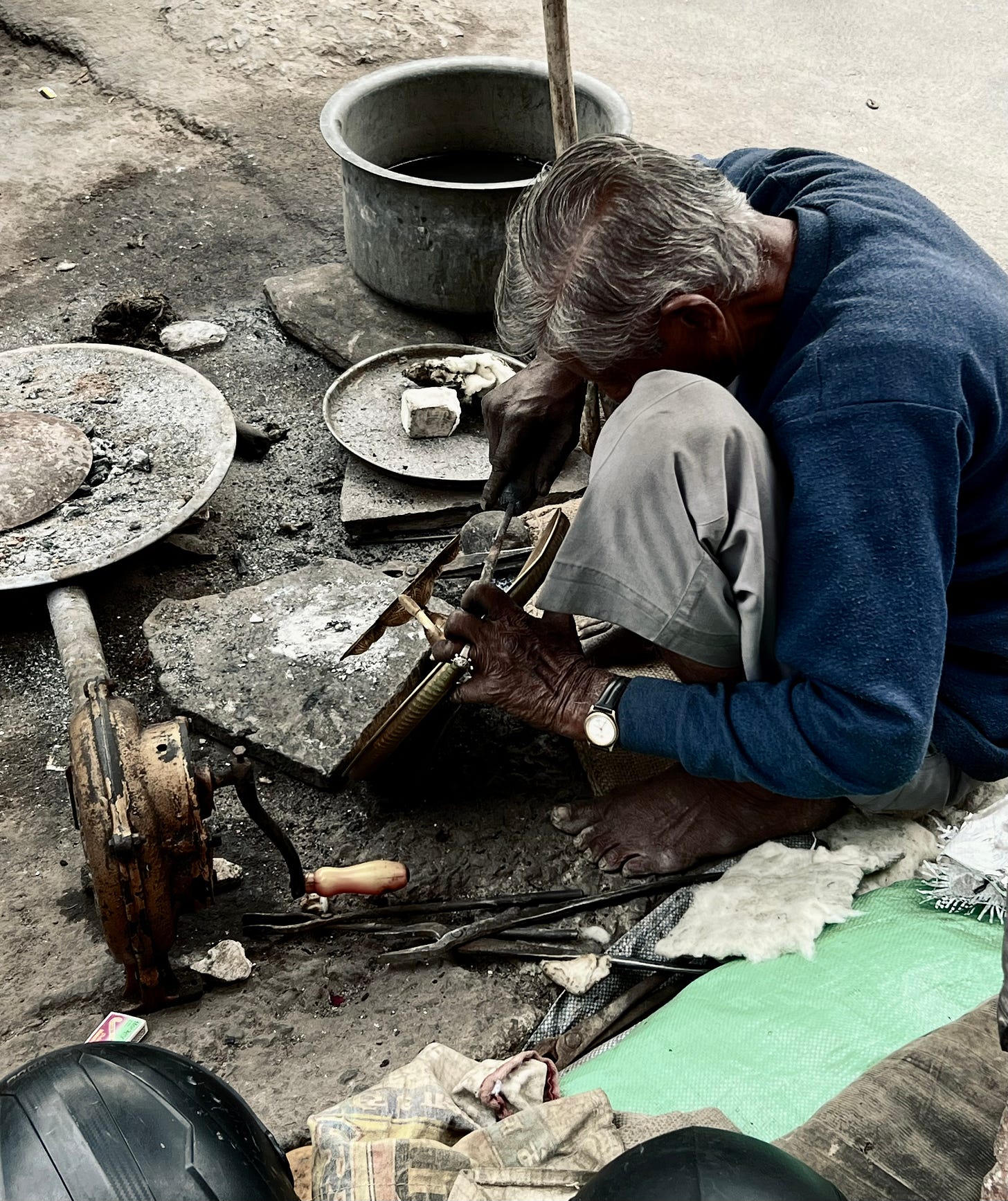
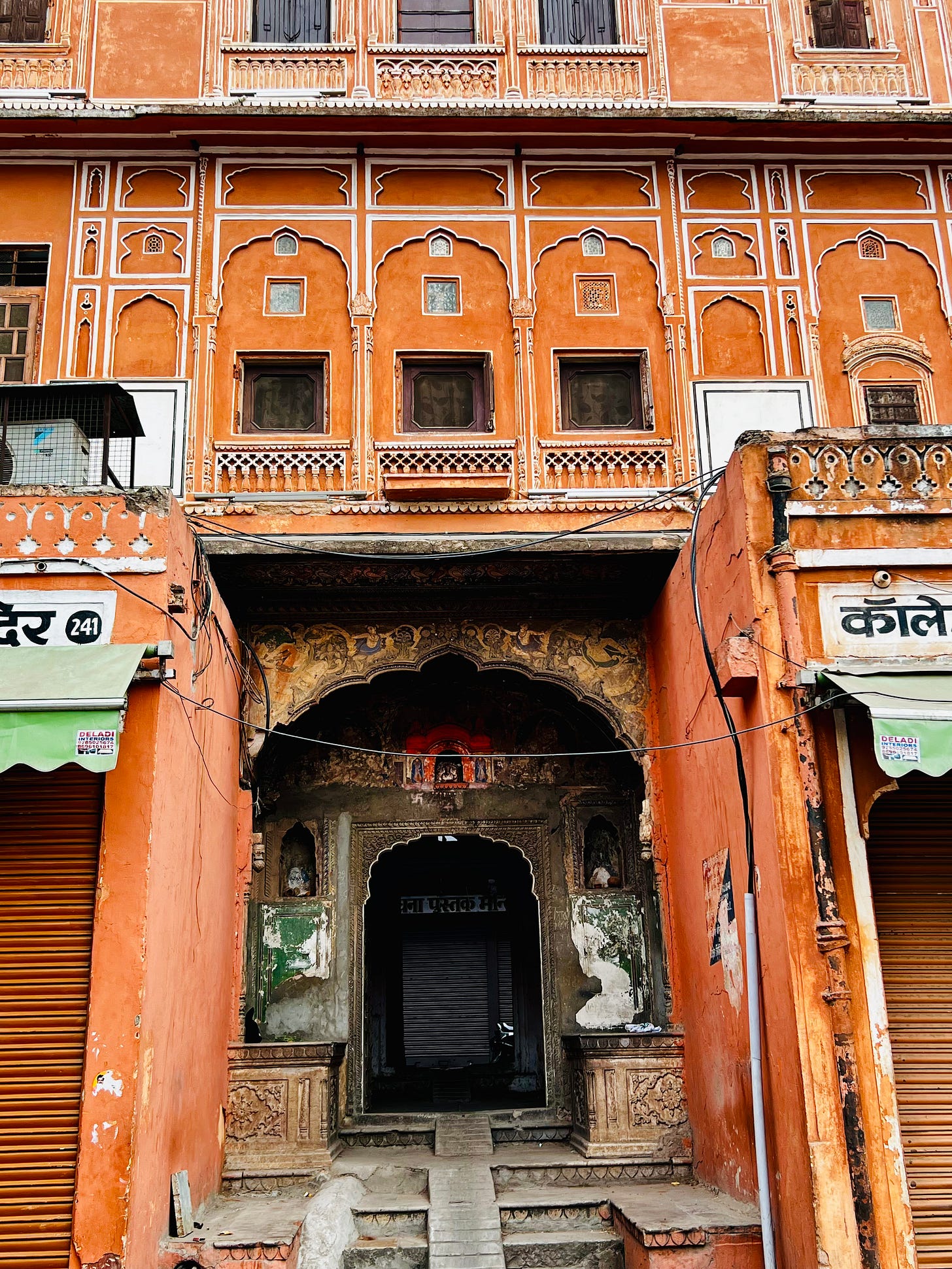
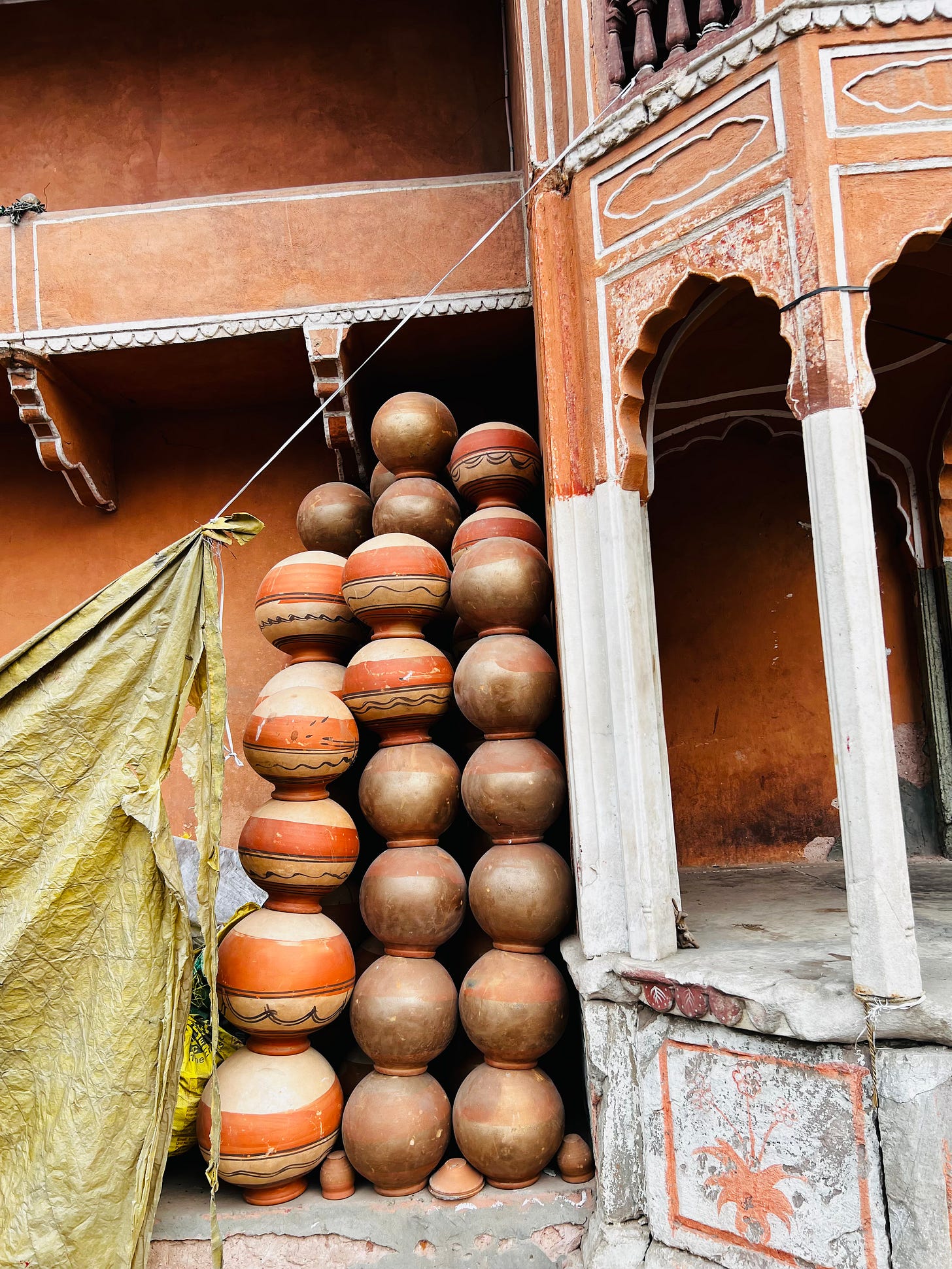
I hope you’ve enjoyed this edition’s journey through the vibrant streets of Jaipur. I’d love to hear your thoughts and suggestions on what you’d like me to write next — feel free to hit reply and share your impressions.
If this newsletter resonated with you, why not spread the joy? Sharing Infinity Inklings with friends not only helps grow our community of curious minds but also unlocks some exciting rewards as I mentioned before, including a handwritten postcard featuring one of the photographs from this newsletter for only 3 referrals.

